Going weak in the knees before a first date is a good thing. Going weak in the knees mid-run or during a sweaty yoga class? Not so much.
Sadly, most of us deal with the second type more often: knee pain. Let’s talk yoga meets knee health.
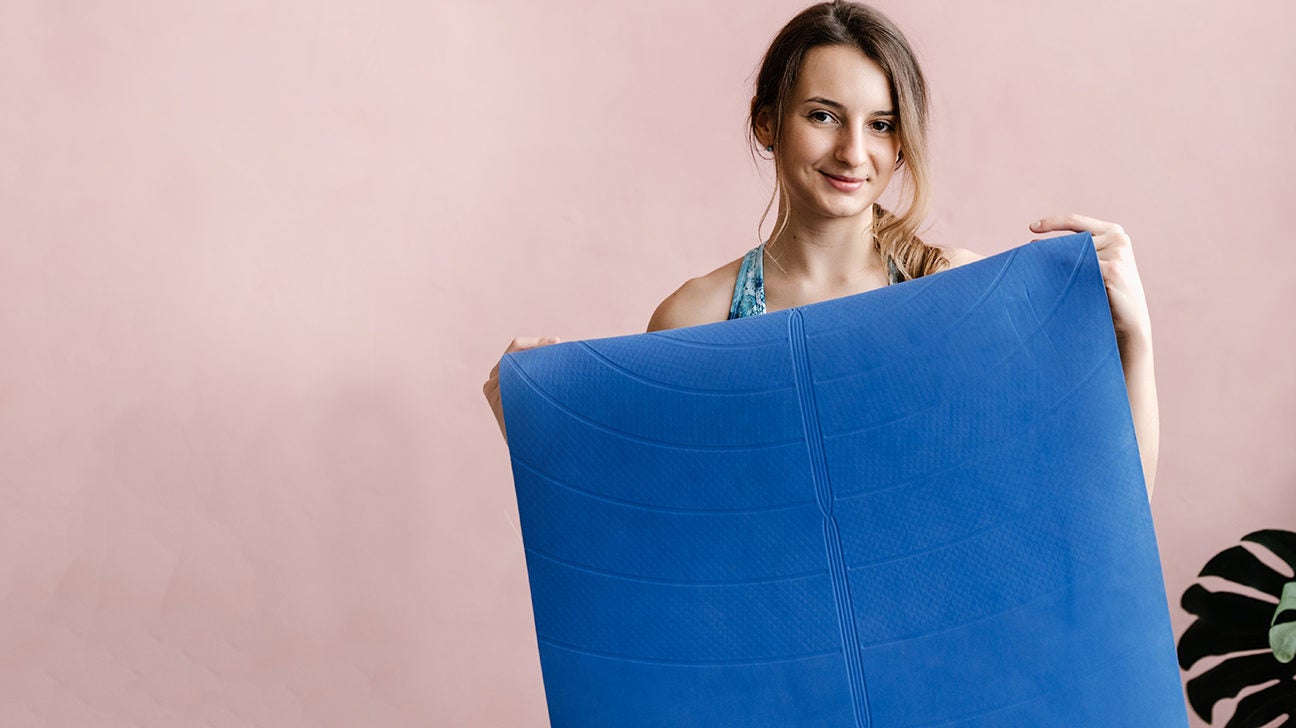
Common causes of knee pain
Chronic knee pain is on the rise in America. In a 2011 analysis, researchers noted a marked increase in the number of knee replacements and people with knee pain over a 20-year period, due at least in part to osteoporosis and other conditions.
And according to a 2018 estimate, around 25 percent of Americans experienced knee pain — a 65 percent uptick over the previous 20 years.
Strangely enough, the issue usually isn’t with the knee itself. Because it’s a joint, it’s affected by the muscles surrounding it, including the quads, hamstrings, and calves.
“The knee never acts in isolation because of the way the soft structure of the cartilage is designed,” explains Jill Miller, certified yoga instructor and creator of Yoga Tune Up.
Other typical culprits of knee pain include injury to a ligament (like a torn ACL), weak quads or hamstrings, or a chronic condition like tendinitis.
Or blame your job: Sitting at a desk all day can create imbalances in your body by weakening your butt muscles, Miller says. It’s best to see a doctor or physical therapist to find out what’s causing your particular pain.
Benefits of yoga for knee pain
On the bright side, several specific yoga poses can help provide relief, as we’ll explore below. Studies show that people with knee pain can get some much-needed relief by practicing yoga a few times a week.
In 2013, for example, researchers worked with 30 women who had knee osteoarthritis. Half were assigned to an 8-week yoga program. By the end of the study, their pain and symptoms had decreased more than those of the control group, and they had a better overall quality of life.
One study is great, but how about six?
A 2016 review looked at six studies on the effects of yoga on osteoarthritis. In these studies, people experienced pain relief and functional improvements as early as 2 weeks after regularly getting on the mat. The researchers concluded that yoga could be a medication-free means of relieving pain and improving mobility.
Other more recent studies have shown similar results, placing yoga among the best natural knee pain relief methods, alongside tai chi and massage therapy.
While this is exciting news, some research has also found that certain yoga poses (especially single-leg balances) can be stressful on the knees. On the other hand, squatting and lunging postures can improve leg strength and minimize knee adduction — the inward movement of the knees that’s associated with osteoarthritis.
If you have knee pain, it’s important to practice with awareness and stabilize your knees by actively contracting the muscles around them, Miller says. It’s also a good idea to find an experienced fitness instructor or trainer you trust and let them guide you as you exercise.
Best yoga poses to help with knee pain
If you’re in a yoga studio, be sure to let your teacher know about any injuries or concerns before class starts, says Steven Cheng, a certified yoga instructor.
And remember: “If a pose doesn’t feel good, causes pain, or gives you a sharp sensation in the patella (kneecap), adjust it or don’t do it,” Miller says.
1. Chair Pose
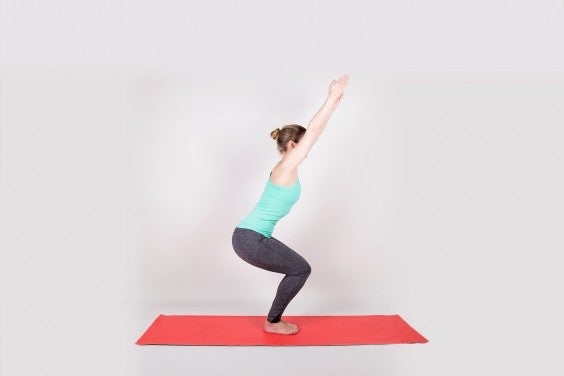
Stand with your feet and legs together and your chest lifted. Sit back and down (as if you’re sitting in a chair). Beginners may find more support and stability with feet hip-width apart. Keep weight in your heels and raise arms overhead.
The perk
“Your weight is put into your hip sockets to ensure your knees aren’t inching out in front of your toes,” Miller says. “Plus, this move is a whole-body toner, strengthening the hips, thighs, and calves, which makes the knee function better.”
2. Peaceful Warrior Pose
Step your right foot forward with toes pointing straight. Turn your left toes 45 degrees to the side and extend arms out with palms facing up. Bend right knee at a 90-degree angle, keeping it in line with ankle.
Place the back of your left hand on your left leg and arch back, reaching right arm overhead and toward the back of your mat, gazing toward the ceiling.
The perk
This pose activates and strengthens the glutes, quads, and hamstrings — all muscles that help keep the knee in good shape, Miller says.
3. Bridge Pose
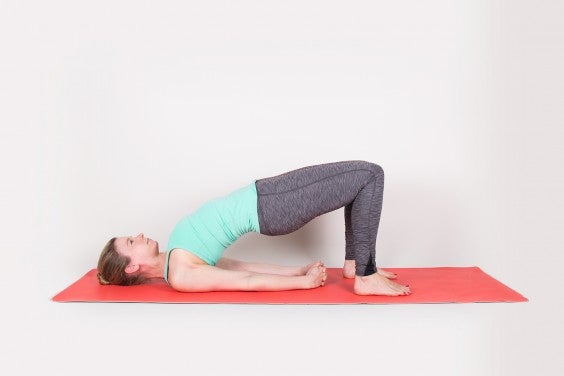
Lie faceup with knees bent, feet on the floor shoulder-width apart, and arms down at your sides. Engage your glutes and push through heels to lift your body off the floor, so you’re resting on just your shoulders.
The perk
“This is a great glute and hamstring strengthener, plus it works the IT band,” Miller says. “When the IT band is too lax, you’ll end up having knee pain.”
4. High Lunge Pose
Start standing at the front of the mat. Step your left foot back into a deep lunge, bending right leg to about 90 degrees. Raise your arms straight up and look forward. If your hamstrings are tight, microbend your back leg; this is also less taxing on your knees.
The perk
“This pose strengthens the glutes, quads, and calves in a stable position,” Cheng says. “The balancing aspect further strengthens all these muscle groups that support the knees.”
Yoga poses to modify for knee pain
Some yoga poses aren’t so friendly for your knees. Here’s how to modify several that put stress on these all-important joints.
1. Camel Pose
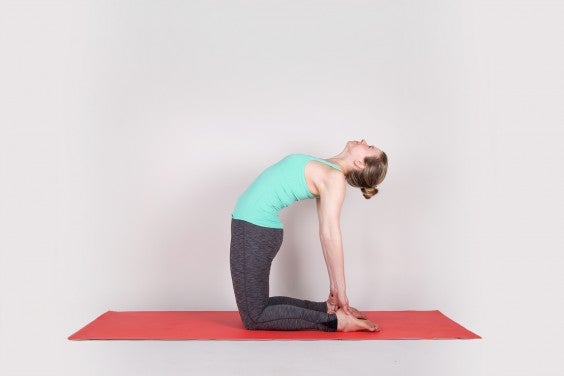
Kneel on the mat with your knees shoulder-width apart. Reach back and place hands on the bottoms of your feet. Arch into a backbend and let your head fall back, gazing at the wall behind you.
The problem
“This puts a lot of direct pressure on the knees, which isn’t good for anyone with unstable knees or a history of ligament strain,” Miller explains.
How to fix it
Kneel on a rolled-up mat or blanket. (How easy was that?)
2. Hero Pose
Kneel on the mat. Take knees out wide, pushing feet out to the sides, and sit between your heels, leaning back as far as possible.
The problem
“This is a very extreme position for the knees, as it stretches the medial collateral ligaments, or MCL,” says Miller.
How to fix it
Sit on a yoga block or place a yoga mat or blanket above your calves.
3. Twisted (or Revolved) Triangle Pose
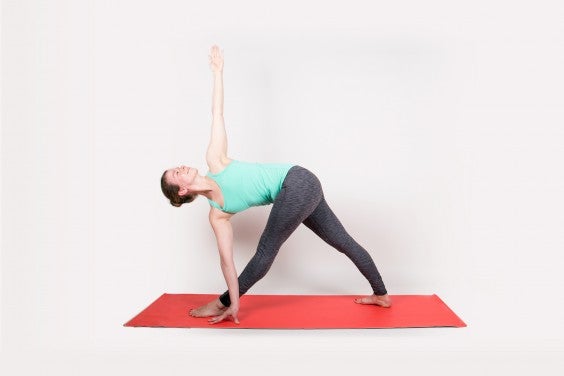
Stand with your feet wider than hip-width apart, left toes pointing forward, right toes turned out 45 degrees. Reach right arm down and place it on the floor outside left foot. Twist your torso and reach left arm up toward the sky.
The problem
“This pose is a double whammy,” Miller says. “Your front leg is locked out straight and your back hip is turned out, which can put lateral shear forces on the knee.”
How to fix it
Place your back foot parallel to the front foot.
4. Lotus Pose
Sit on the floor with legs straight out in front of you. Bend your knees and place feet on opposite thighs with bottoms of feet pointing upward.
The problem
“This pose requires a great range of motion and rotation from hip, knee, and ankle joints from both legs,” says Cheng. “But this pose is particularly difficult on the knees — especially the knee that is on top — and can even be the cause of problems.”
How to fix it
This one has a simple fix! Just sit cross-legged instead.
5. Extended Hand-to-Big-Toe Pose
While standing, lift right leg and bend knee in toward chest. Grab hold of your right big toe with your right hand. Slowly extend right leg straight and then out to the side, still holding onto big toe.
The problem
“In this standing balance pose, it is very common for practitioners to hyperextend the knee on both the standing leg and the extended leg,” Cheng says. In general, it’s unwise to lock your knees in any pose unless told otherwise.
How to fix it
Microbend your knees on both legs.
Takeaway
If you’ve got knee probs, you might (understandably) be leery of contorting yourself into a pretzel — but the research shows that the right kind of yoga can have major benefits for people with knee pain. In fact, many poses specifically target the knees for relief, while others can be easily modified to spare your joints.
Keep in mind that a robust yoga practice doesn’t happen overnight. You can work your way up to yogi status over time. And remember that if it hurts, it’s time to modify or stop.

0 Commentaires